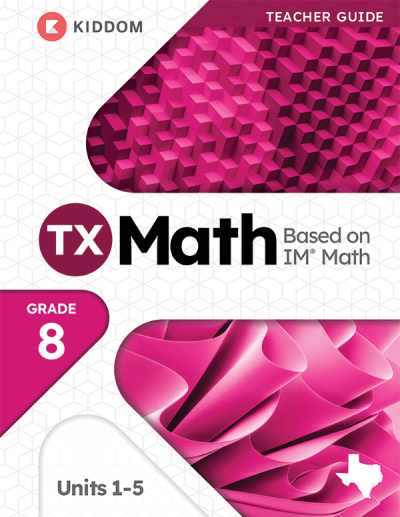Evaluation for 5.3c
Materials include supports for students in connecting, creating, defining, and explaining concrete and representational models to abstract (symbolic/numeric/algorithmic) concepts, as required by the TEKS.
Materials include supports for students in connecting, defining, and explaining concrete and representational models to abstract (symbolic/numeric/algorithmic) concepts, as required by the TEKS. In grade 8, Unit 8, Lesson 2, "2.2: Hanging Blocks," the materials include supports for students in connecting, defining, and explaining representational models to the abstract concept of equations. For example, the Activity Synthesis states, "The outcome of this discussion should be that it is okay to add or remove terms of the same 'size' from both sides of an equation, and the sides will still be equal. This can be thought of in terms of shapes hanging on hangers, where you can remove one square from both sides or add two triangles to both sides, and the hanger will stay in balance. Equations are a more abstract representation of this, but the same concept holds: you can remove one x from both sides or add two 3s to both sides, and the equation is still true with the left side equal to the right side." Materials include supports for students in connecting, creating, defining, and explaining concrete and representational models to abstract (symbolic/numeric/algorithmic) concepts, as required by the TEKS. In grade 8, Unit 1, Lesson 6, "6.2: Rotating Shapes: Algebraic Transformations," the materials include supports for students in connecting and creating the concrete models using tracing paper to the abstract concept of the algebraic representation of rotations. The "Activity Narrative" states, "The purpose of this activity is to familiarize students with the effects of rotating two-dimensional shapes 90° on a coordinate plane, using algebraic representations. Through hands-on practice, students develop their ability to describe and record rotations algebraically and identify patterns in the coordinates of rotated points."



